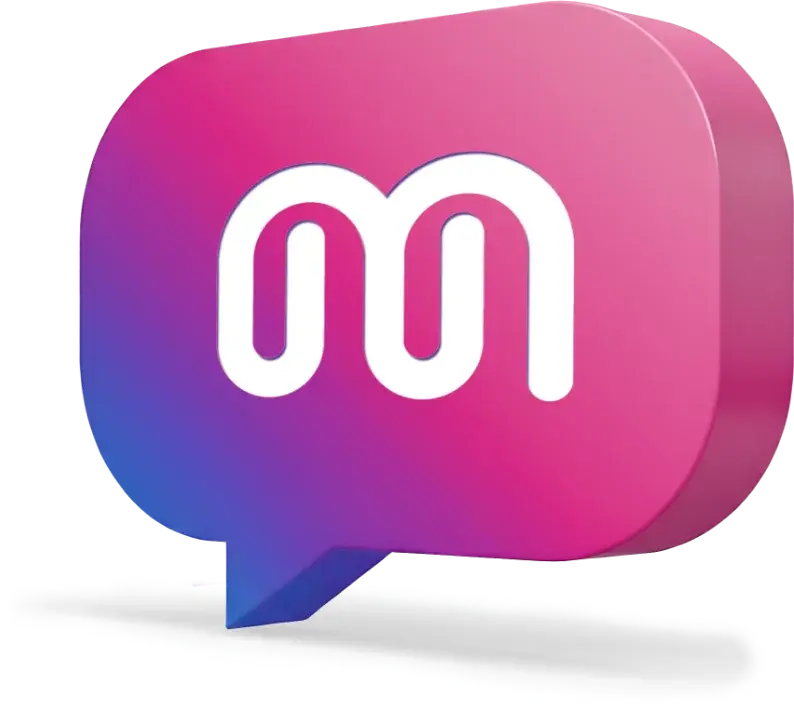SECTION
The 2025 Guide to Employee Engagement: From Concept to Action

Listen to this article:
Note: This article was updated on July 8, 2025, with insights into the employee engagement model, tips on measuring engagement levels, and a step-by-step action plan for HR leaders.
Imagine a janitor at NASA in the 1960s. When asked by President John F. Kennedy what he was doing, he didn't say, "I'm mopping the floor." Instead, he replied, "I'm helping to put a man on the Moon." This janitor embodied the essence of employee engagement: a deep connection to the organization's mission, where every task, no matter how small, contributes to a greater purpose.
This story illustrates the power of employee engagement. Engaged employees look beyond their immediate tasks, aligning their efforts with the organization's goals.
In this comprehensive guide, we'll cover every aspect of employee engagement, providing actionable insights for HR professionals, managers, and business leaders to create a thriving and motivated workforce.
What is employee engagement?
Employee engagement refers to the degree to which individuals are passionate about their work and committed to achieving their organization's objectives. It encompasses emotional investment, a sense of belonging, and enthusiasm for contributing to the company's success.
Engaged employees aren't just satisfied but also motivated to go the extra mile, feeling that their efforts make a difference. Unlike job satisfaction, which may be influenced by pay or working conditions, engagement is about connection.
Why is employee engagement important?
The most productive environment for businesses and employees is one that fosters high levels of engagement among its people. Let's have a look at the most relevant dimensions in which employee engagement has an impact:
- Increased productivity: Companies that effectively engage their people have seen a 14% increase in productivity, according to Gallup research. When employees are engaged and their well-being is prioritized, organizations benefit from positive outcomes, including increased sales, customer loyalty, and higher levels of organizational citizenship.
- Reduced turnover: According to Gallup research, 37% of engaged employees are looking for a new job, compared with 73% of actively disengaged employees. This figure reveals that three in four disengaged employees are actively seeking a new job, which means companies with a disengaged workforce have higher turnover rates than those with actively engaged employees.
- Higher financial performance: Studies indicate that employees with high engagement rates are 23% more profitable than those with low engagement rates. Highly engaged employees are more productive and experience lower absenteeism rates, resulting in increased organizational profitability.
- Positive impact on AI: According to Cerkl Broadcast, 53% of engaged employees report feeling at ease using AI at work, compared to 30% of disengaged people who do not feel comfortable using AI.
🔎 Conversely, low engagement is costly. Engagement is thus a critical lever for business success.
What are the top drivers of employee engagement?
Now that you understand the business impact of employee engagement, let’s explore the main factors that drive it:
🔎 These drivers vary by organization, but addressing them holistically creates a robust engagement strategy.
Who drives employee engagement?
You can have a favorable work environment to increase employee engagement, but it is also necessary that the people in the company contribute to it. Employee engagement is a shared responsibility across multiple stakeholders:
- People leaders: They have the most direct impact, shaping daily work experiences through coaching, recognition, and support. Gallup indicates that 70% of the variance in team engagement is determined solely by the manager.
- Top management: Executives set the tone by defining the vision, modeling engagement, and creating supportive policies and procedures.
- HR: HR professionals and leaders design engagement strategies, provide training, and facilitate internal communication.
- Employees: Individuals must take initiative, seek feedback, and align with organizational goals to sustain their own engagement.
Hidden ambassadors: These are influential employees who may not hold formal leadership titles but inspire peers through their actions, enthusiasm, and credibility. By recognizing and empowering hidden ambassadors, organizations can amplify engagement initiatives across the company.
What is an employee engagement model?
An employee engagement model is a framework that outlines the key factors influencing it within an organization. It aims to identify what drives employees' commitment, motivation, and job satisfaction.
The model helps people leaders to understand and measure engagement and implement strategies that foster it. While there are different models, most share a common focus on several critical dimensions:
Dimensions of an employee engagement model
- Leadership: You can't expect your people to live your core values if leaders don't do the same. Company leadership sets the tone for culture, so applying your core belief system to your day-to-day operations is critical.
- Manager Training: Educate your people managers and inspire them to take action. Hire with culture in mind and attract the right managers who align with your company's values.
- Communication: Communicate transparently about your expectations for your team, clearly define their roles and objectives, and adopt an open-door policy so that everyone feels comfortable asking questions.
- Recognition and Rewards: Employee recognition goes a long way in helping your team feel valued. Make a habit of celebrating your people's birthdays, work anniversaries, and successes. A sound recognition system provides individuals with greater confidence and motivates them to work harder.
- Professional Development: Most people feel valued and cared for when their employer supports career advancement and skills development. Consider offering education reimbursement for training and courses. Having this kind of approach will inspire and engage your people, motivating them to work towards achieving their goals.
- Work-Life Balance: Organizations that support work-life balance tend to report higher engagement levels. This can include flexible working hours, remote work options, and encouraging employees to take time off when needed.
- Employee Well-being: Recognizing the demand for a mental health program is essential for people leaders. If you already run such a program, you are moving closer to having an engaged workforce. Understand the underlying source of a problem, be sympathetic and kind to your people, encourage taking breaks, and instill a culture of unplugging after work hours.
- Job Fit: When people feel that their skills and values align with their job roles and the company's values, they are more likely to be engaged. Ensuring the right person is in the right role is crucial.
- Community and Belonging: Enhance employee engagement in the workplace by incorporating various team-building activities. This will help boost morale and strengthen the relationships between co-workers.
- Company Culture: Begin by evaluating whether your company culture is strong, supportive, and positive. People are more likely to engage in an environment where they feel connected, respected, and part of a larger community.
How to implement an employee engagement action plan in five steps:
Now that we've explored every facet of employee engagement, let's boost those numbers. The following engagement tips will help organizations develop a better workplace with happier, more effective, and more productive employees. Follow these steps:
Step #1: Assess engagement levels
The first step in increasing employee engagement is to establish a baseline and build upon it. Use workforce segmentation in employee surveys or real-time workforce insights dashboards to gain a deeper understanding of how various employee groups experience the workplace.
Step #2: Identify improvement areas
If you determine there is still room for improvement, consider auditing your organization's vision, mission, and values. Review your existing internal code of conduct, if you have one, and consider creating one if you don't. This is a great starting point to showcase to your employees what you stand for and wish to see in your people.
Step #3: Involve your people
An engaged workforce is a team effort, so involve everyone in the change. Ditch the corporate narrative and refrain from showcasing your hierarchical organizational structure. Instead, give people autonomy and create a space where they feel safe to speak up. Encourage and foster relationships among all individuals, not just mentors and mentees, and make sure to actively engage frontline workers who often have unique insights into customer needs and daily operations.
Step #4: Implement the plan
You need an execution plan that is clear, measurable, and transparent.
Start by creating your roadmap. Define specific, quantifiable goals, such as increasing eNPS by 10%. Then, designate owners for each action item. Ultimately, verify alignment to ensure that activities correspond with the areas of focus.
Step #5: Monitor progress
To stay on track after your strategy is released, you must consistently take action. This involves monitoring progress, communicating openly and honestly with everyone on the team, and adjusting the plan in response to new information and achievements as they emerge.
How to measure employee engagement
Now that you have all the tools to create your engagement action plan, it’s time to learn how to measure its effectiveness. Below are some of the best methods to determine the success of your engagement plan:
These methods can help assess whether people fall into engaged, not engaged, or disengaged categories, or how they score on cognitive, emotional, physical, and social dimensions.
We recommend starting with employee surveys, as they provide employees with a voice and encourage them to offer honest feedback. Then, commit to acting on feedback to build trust.
Successful engagement initiatives from real companies
Leading companies around the globe are proving that thoughtful, values-driven engagement initiatives can drive satisfaction, retention, and performance. Here are two examples from Hilton and HubSpot that show how a deeper investment in engagement pays off:
Hilton: Focusing on holistic employee well-being
The initiative: The hospitality giant Hilton has made employee well-being a cornerstone of its engagement strategy. They have implemented a comprehensive program called "Thrive at Hilton," which focuses on the physical, mental, and financial health of their team members.
This includes initiatives like "Hilton Flex," which offers more flexible work schedules, access to mental health resources and free counseling sessions, as well as tools for financial wellness.
By investing in the holistic well-being of its staff, Hilton demonstrates that it values them as whole individuals, not just as employees.
This focus on creating "a fully human experience at work" builds a deep sense of psychological safety and care. When employees feel supported in all aspects of their lives, they are more likely to be present, focused, and motivated at work. This has led to Hilton consistently being ranked as one of the best companies to work for, with high employee satisfaction and lower turnover rates in a typically high-turnover industry.
Hubspot: Because culture is a product
The initiative: HubSpot treats company culture as an evolving product, placing internal communication and employee engagement at its core. They have established a continuously updated Culture Code that serves as both a guide for internal behavior and an external commitment to cultural principles.
Intentional transparency is a major driver of engagement: everyone on the team has full access to company decisions and data, promoting trust and inclusion. The internal communications team actively ensures consistent, clear messaging, especially during their hybrid work transition, blurring the lines between internal and external messaging to keep employees connected and informed.
HubSpot also invests heavily in peer-to-peer recognition and ongoing cultural reinforcement. They run programs like HEART Week, where company values are not only promoted but iteratively refined (e.g., 'Empathy' was added to HEART following employee feedback).
How to choose the best employee engagement software
With data-driven insights from employee engagement software, you can increase well-being and foster a more contented, healthy, and effective workforce. But selecting the right software is no easy feat. Consider these factors before choosing the right tool for your needs:
Changing employee engagement in the modern workplace
It has never been clearer that employee engagement is the ally for every organization that wants to create a positive work experience for its people. The employee engagement statistics presented in this article indicate that companies still have a long way to go to foster a positive company culture.
While it can be challenging to implement a well-thought-out employee wellbeing strategy, many resources and tools can support you along. The most important thing in this situation is implementing the right plans and methods to benefit you and your team in the long run.
With data-driven insights from our all-in-one performance management tool, you can increase employee wellbeing and foster a more contented, healthy, and effective workforce. Contact us to learn more about how Mirro can help you improve employee wellbeing and boost engagement.







